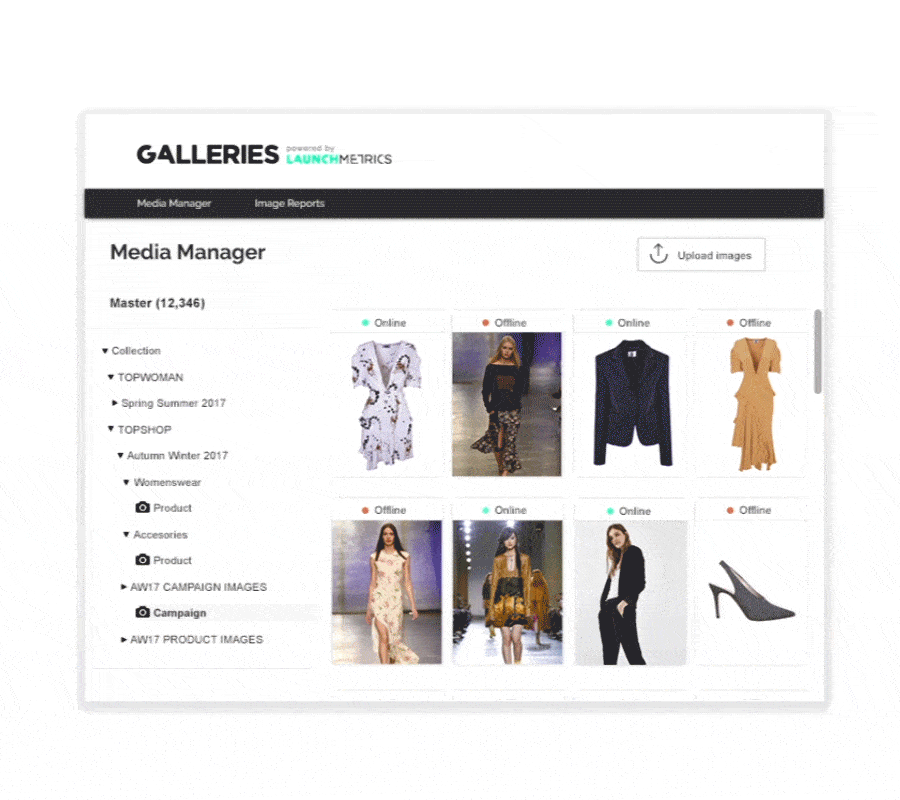In the fashion industry, the supply chain is at the center of many debates now more than ever, especially when considering the acceleration of processes companies are going through. Today, fashion companies are faced with unprecedented challenges thanks to internationalization, the acceleration of the trend cycle, the consumer demand for quality and for transparency, as well as a need for a reduction in losses and an increase in profits, established by an increasingly competitive market.
According to the State of Fashion 2018 report published by McKinsey and The Business of Fashion, the third biggest challenge fashion companies will face this year is the improvement and digitalization of the supply chain industry. In fact, 75% of the executives surveyed confirmed that Artificial Intelligence will be implemented, in one way or another, in some part of their companies' supply chains to achieve greater flexibility in this new, fast-paced and fleeting era.
Implementing technology is key, not only in regards to the supply chain and the consumer but in all of the other internal processes as well. What are the changes that are affecting the industry and forcing companies to re-think and re-strategize their processes within the supply chain? What are companies doing to improve it? In this post, I'm giving you a breakdown of the 3 key elements that are propelling fashion companies to implement change in their supply chains.
In this article you’ll learn…
Flexibility Throughout the Supply Chain
Mobile payment systems, smart fitting rooms, and interactive screens to search for garments: these are just a few innovations fashion brands are coming up with and implementing in their brick-and-mortar in order to accelerate and make the shopping experience easier for shoppers. However, a lot goes on behind the scenes to achieve these changes within the design-produce-distribute lifecycle, which is invisible to the final consumer.
There are two main elements that are changing the backend processes in the industry:
An automated supply chain system
Flexibility in reaction time is only possible when a company is able to manage data and obtain information quickly. Possible scenarios that require quick reaction time include the need for an increase in production of a certain product that became successful overnight thanks to the product launch campaign, or when there's an issue with the sizing of a shoe which needs to be sent immediately back to production to not experience any more losses. These situations are common for any company within the retail sector but can only be dealt with, in a timely manner and with minimal impact, when the processes are completely automated. Procuring and monitoring data at each step of the supply chain allows fashion companies the possibility to make more accurate decisions, as well as increase the efficiency at all levels.
Enterprise Resource Planning (ERP) systems were first used in the fashion industry in the '90s in order to control inventory. In the last couple of decades, software solutions have evolved to meet the needs of each department within companies and can now combine different data to be used at every level in a retailer. In fact, according to Gartner Consulting, companies who migrate their systems to ERP by 2020 will have improved their response rate by 75%.
Team Work: On the Cloud
Companies are becoming increasingly de-centralized and internationalized. And, the only way to save all of the information that these teams manage, as well as optimize workflow between teams, is through a cloud system.
Utilizing a digital asset management system on a cloud–to store images of collections and shows–allows teams to sync information among the design, production, merchandising and PR departments, and to store and keep track of all of the company's valuable information. 
Adapting to the New Consumer Buying Cycle
Social media has brought upon many changes in consumer behavior, and among these is the need for immediacy. In order to adapt to an increasingly demanding consumer, more and more brands are taking on the 'See now, buy now' strategy, as shoppers are used to adopting new trends almost as soon as they come out. Fast Fashion companies have also contributed to this change in the consumer buying cycle and even luxury houses, such as Burberry, are now adjusting their strategies to keep up with competition and increase profits.
Being able to identify consumer needs ahead of time is vital, and the way many companies do this is by measuring and monitoring their product launch campaigns or collection presentations. Some companies such as Kate Spade and Fenwick, take it a step further and use an ERP system which allows them to control their stock and sample collections.
By using sample tracking tools or other tools related to the measurement of product launch campaigns, brands can gauge the popularity of an item by observing which looks were requested the most by press, influencers or stylists, and predict the demand for each product before the full collections hit the market. This allows for more accurate predictions of production needs, reducing potential losses and optimizing resources.

Quality and Transparency in the Supply Chain Industry
Another factor which is forcing change within the supply chain is the demand for quality and transparency, thanks to an increasingly conscientious and socially responsible consumer.
In 2013, the terrible news of the Rana Plaza disaster in Bangladesh left the world in shock as the death toll rose to more than 1,000 workers. The clothing factory collapse, which was responsible for the production of collections by many big players in fashion, was a wake up call for the industry. Many consumers, companies and institutions raised their voices and protested against a system which had been exploiting developing countries for many years, all to satisfy the needs of consumers in developed nations. This was a key moment in the history of the industry in which companies began working on CSR strategies and the optimization of supply chains, with the aim of working towards a circular economy.
According to McKinsey, in 2018 fashion brands will work on ways to take better advantage of materials, from the initial sourcing stage to the creation of the final product, and many others will also work on achieving sustainability through technology. 42% of companies in the industry will openly offer their consumers information regarding their suppliers and production processes in 2018.
Stella McCartney is a great example of how a luxury fashion brand can be ethical and socially responsible. The British designer has expressed her belief that style can never be at the cost of sustainability, and because of this, along with Ellen McArther, McCartney co-presented the launch of their report A New Textiles Economy: Redesigning Fashion's Future around the same time as the launch of her 2017 winter campaign.
In the next few years, it'll be interesting to see and analyze just how companies in the industry will take on these challenges and adapt their supply chains and product life cycles. How do you think fashion brands will adjust to these changes?

